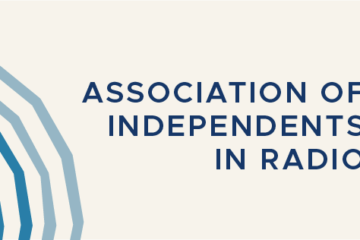Consultant to CPB: Public broadcasting is worth billions to the public
If public broadcasting loses its federal aid, it’s “highly unlikely” that it will recover the same amounts by increasing revenues from product licensing, individual contributors or local and state governments, an economics consulting firm reported back to CPB last week.
Moreover, “the nature of public broadcasting will inevitably change” if the field loses its federal assistance, according to National Economic Research Associates, a White Plains, N.Y., firm that presented conclusions of its CPB-commissioned study to the CPB Board on March 14.
Steven Schwartz, v.p. of NERA, also estimated that public broadcasting has a value of $2.8 billion to $4.3 billion to the American public–far more than the $1.8 billion from all sources that are spent on it, or the $285 million that Congress appropriated for this year.
The study responded to remarks by public broadcasting’s opponents on the CPB funding issue, who contend that the field could easily replace the federal aid.
No easy options
Revenues from product licensing are “too small and uncertain to be relied upon,” Schwartz told the CPB Board. CPB gets only a small portion of retail sales of products associated with public broadcasting programs because the licensing industry works that way, “not as a result of neglect” by public broadcasters, he said.
When a toy with a licensed identity sells for $35, the manufacturer may get only $4, and the program producer may get just 5 or 6 percent of that, Schwartz said. Funders like CPB typically get a share of that royalty. If a product had retail sales of $1 billion, the producer might receive only $15 million to $30 million of that money, he said.
But successes are rare, he said, because there are “far more misses than hits” in the licensing business.
Similarly, Schwartz saw only limited potential for gains in individual contributions and state/local government funding.
Recent surges in pledging are only “a response to an acute crisis” and are not sustainable, he said. The best available study on the subject, in his view, indicates that individual donors would replace only 14 cents of every federal dollar lost.
That 1989 study, by Bruce Robert Kingma, then at Texas A&M University, actually looked at the opposite situation, Schwartz told Current: it found that, when government funds increased to 66 public radio stations, their average take from individual donors declined by 14 percent. He said there was no reason to expect a different effect in the other direction if federal aid dropped.
As for state/local funding, Schwartz said it would be difficult to persuade governments to increase their aid to public broadcasting at a time when they’re cutting school budgets.
NERA seconded recent assertions by pubcasting leaders that zeroing-out CPB funding would make public broadcasting more commercial.
“Reliance on licensing revenues will force programmers and producers to place increased emphasis on a program’s potential commercial appeal; the nature of programs actually developed and aired will likely be different, perhaps substantially so, from what is currently observed,” according to NERA.
Federal cutbacks also would jeopardize smaller stations, which would have a harder time recovering from the loss, and would make it “less likely” that producers can sustain current levels of program development, the NERA summary concluded.
What’s it worth to you?
When NERA set out to estimate the value of public broadcasting to the public, it started with the amounts that individuals actually donate to the field: $93.2 million to public radio and $297.4 million to public TV in 1993. The average donating household gave $59 a year.
Those donors, however, represent only a fraction of pubcasters’ audiences. One in 16 listening households give to public radio; one in 14 viewing households give to public TV.
Schwartz acknowledged that he couldn’t precisely estimate the value to the public, but did provide a range of estimates.
For the high end, NERA assumed that the services are worth at least as much to contributors as they donate per household. He reasoned that contributors give less than the real value because they know the service will be offered even if they hold back. Using the $59/household figure, he “imputes” a value to noncontributing households of $1.6 billion for public radio and $4.2 billion for public TV. That adds up to $6.1 billion. Then he knocks off 30 percent to reflect the value of tax advantages to donors. Total: $4.3 billion.
For a “more conservative” estimate, NERA did the same arithmetic using the average donations in the lowest quarter of donations: $36 per household for radio, $38 per household for TV. Total: $2.8 billion–“still a very large number,” Schwartz said.
In his analysis, Schwartz referred to noncontributors by the economists’ term, “free-riders,” but CPB Board members didn’t like either term. As long as federal appropriations help public broadcasting, they told Schwartz, nobody is a noncontributor or free-rider.





